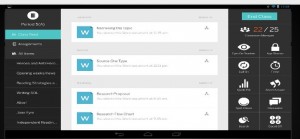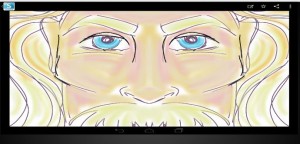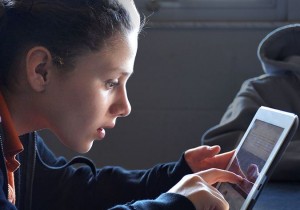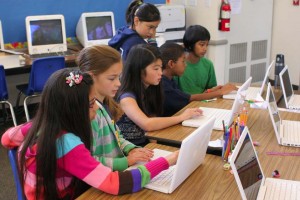Thank you to Matt Henry, English teacher at T.C. Williams High School , for sharing his experiences using Amplify in the classroom. Amplify is a classroom management system for tablets in the classroom. It was great to have his perspective on what can be done with Amplify and how it has impacted teaching and learning for him. If you missed this session, you can still check out the recording here:
TLP-C Amplify Your Teaching Recording
Matt began by reminding us all that the first year of an implementation of any technology is going to have some ups and downs but that this presentation was going to focus on the best aspects of using Amplify in the classroom.
 We then learned about playlists and teacher tools. Participants were able to see how a teacher can send out materials to students, freeze their screens and create discussions all via Amplify.
We then learned about playlists and teacher tools. Participants were able to see how a teacher can send out materials to students, freeze their screens and create discussions all via Amplify.
It was great to hear from an actual classroom teacher that is using the technology everyday. Matt was able to explain how the features work in the classroom and how he’s be able to use the features to really enhance the learning in his classroom.
 Matt also highlighted an app called Sketchbook that he found very effective for non-traditional assignments in his classroom. Check out this great drawing he did! Matt shared that this is an excellent tool for visualization or teaching setting and character study.
Matt also highlighted an app called Sketchbook that he found very effective for non-traditional assignments in his classroom. Check out this great drawing he did! Matt shared that this is an excellent tool for visualization or teaching setting and character study.
If you didn’t get to join us, we hope you can watch the recording. We are also looking forward to our last TLP-C of the 2014-2015 school year on Thursday, June 4th. The last session is a Technology Round-Up where participants share a website, digital tool or resource they have been using. Each presenter shares for a few minutes and then we move onto the next technology. Please email the facilitators with your technology idea (Kyle Dunbar, kyle.dunbar@acps.k12.va.us, Jacqueline Mechanic jacqueline.mechanic@acps.k12.va.us, Melissa King melissa.king@acps.k12.va.us).








